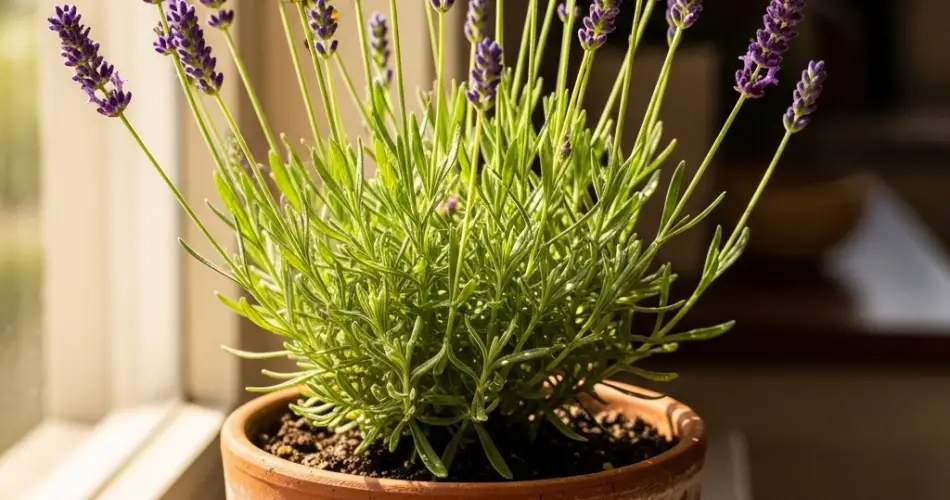Lavender is a beloved herb known for its fragrant purple blooms and soothing aroma. Beyond its decorative appeal, lavender is prized for its use in aromatherapy, crafts, and cooking. Growing lavender in pots is a practical option for gardeners with limited space, offering the ability to enjoy this beautiful herb year-round on patios, balconies, or indoors.
Successfully growing lavender in containers requires attention to its specific needs—especially regarding light, soil, and watering. This article provides essential tips to help you cultivate healthy, vibrant potted lavender plants that thrive and bloom beautifully.
Why Grow Lavender in Pots?
Container gardening with lavender offers several advantages:
-
Space-Saving: Ideal for urban dwellers or those with limited garden space.
-
Mobility: Easily move pots to catch optimal sunlight or protect plants during harsh weather.
-
Control: Manage soil quality and moisture levels more precisely.
-
Year-Round Enjoyment: With proper care, lavender can thrive indoors or outdoors throughout the seasons.
-
Decorative and Aromatic: Adds beauty and fragrance to any living space.
Light Requirements for Potted Lavender
Lavender is a sun-loving plant that thrives on ample bright light:
-
Full Sun: Lavender needs at least 6 to 8 hours of direct sunlight daily to bloom well and stay healthy.
-
Ideal Placement: Position your lavender pot in a south- or west-facing window, balcony, or patio where it can soak in maximum sunlight.
-
Indoor Growing: If natural light is limited indoors, supplement with grow lights for 12 to 14 hours per day to mimic outdoor conditions.
-
Avoid Shade: Insufficient light leads to leggy growth, fewer blooms, and weak plants.
Soil Requirements for Lavender in Containers
Lavender prefers well-draining soil that mimics its native Mediterranean habitat:
-
Soil Type: Use a sandy or gritty potting mix designed for succulents or herbs.
-
Drainage: Excellent drainage is crucial to prevent root rot. Mix regular potting soil with sand, perlite, or small gravel.
-
pH Level: Lavender thrives in slightly alkaline to neutral soils, with pH around 6.7 to 7.3.
-
Avoid Heavy Soils: Do not use dense or moisture-retentive soils, which can suffocate roots and invite fungal diseases.
Choosing the Right Pot
The container itself plays a vital role in lavender’s success:
-
Size: Select a pot at least 12 inches deep and wide to accommodate the plant’s root system.
-
Material: Terracotta or unglazed ceramic pots are ideal since they allow excess moisture to evaporate, keeping the soil drier.
-
Drainage: Ensure the pot has multiple drainage holes; you may add a layer of gravel at the bottom for improved drainage.
Watering Tips for Potted Lavender
Lavender is drought-tolerant and prefers moderate watering:
-
Water Deeply but Infrequently: Allow the soil to dry out between watering. When you water, soak the soil thoroughly.
-
Avoid Overwatering: Excess moisture is the most common cause of lavender failure in pots. Waterlogging leads to root rot and fungal infections.
-
Check Soil Moisture: Stick your finger into the soil; water only when the top 1 to 2 inches feel dry.
-
Adjust for Season: Water more sparingly during winter dormancy; increase frequency during hot, dry summer months.
Additional Care Tips for Potted Lavender
-
Fertilizing: Lavender requires minimal feeding. Use a balanced, slow-release fertilizer once or twice during the growing season. Avoid high-nitrogen fertilizers that encourage leafy growth over flowers.
-
Pruning: After flowering, prune the plant lightly to maintain shape and encourage bushy growth. Avoid cutting into old wood.
-
Air Circulation: Good airflow helps prevent fungal diseases, so avoid overcrowding plants.
-
Winter Protection: In colder climates, bring potted lavender indoors or place it in a sheltered spot to protect from frost.
Common Challenges and Solutions
-
Leggy, Sparse Growth: Usually caused by inadequate light. Move your lavender to a sunnier location or supplement with artificial light.
-
Yellow or Wilting Leaves: Often a sign of overwatering or poor drainage. Let soil dry out and check pot drainage.
-
Fungal Diseases: Root rot or powdery mildew can occur if the plant is kept too wet or lacks airflow. Ensure proper watering and air circulation.
-
Lack of Blooms: Insufficient light, over-fertilization, or improper pruning can reduce flowering. Ensure ample sun and minimal fertilizer use.
Benefits of Growing Lavender in Pots
-
Fragrance: Enjoy the calming scent of fresh lavender indoors or outside.
-
Versatility: Use lavender for cooking, crafts, or aromatherapy.
-
Visual Appeal: Adds a splash of purple and lovely texture to your living space.
-
Compact Growth: Container growth keeps lavender manageable and easy to care for.
Conclusion
Growing lavender in pots is a rewarding way to enjoy this fragrant and beautiful herb, whether you have a large garden or just a small balcony. By providing ample sunlight, well-draining soil, and careful watering, you can help your lavender flourish and produce abundant blooms.
With the right container and care, your potted lavender will thrive, filling your space with color, fragrance, and a touch of Mediterranean charm.



